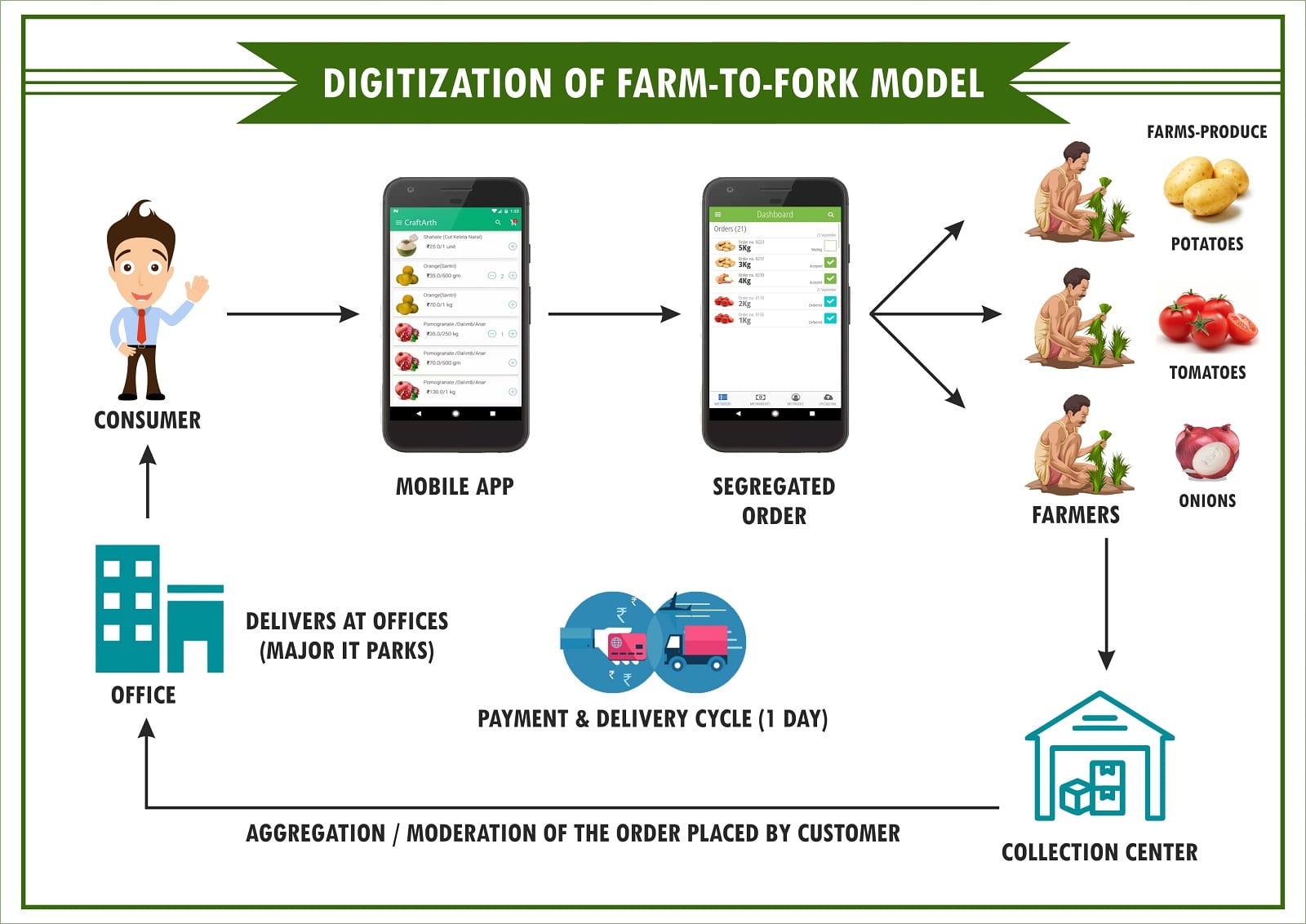Digitization of Farm to Fork Model
The agricultural sector has been facing a plethora of complications, many of which are contributed by human factors more than natural ones.
Here we need a technology enabled solution that would support farmers in understanding their customer’s needs closely, firmly coupled with transparency and trust. A platform which would make the lives of both farmers and customers as easy as a breeze to sell their produce and receive their orders respectively on a timely basis and eradicate malicious deals.
Such innovations can go a long way in levelling monopolized agricultural markets if the dated regulations are scrapped and helps in the convergence of two different groups and extreme ends of the supply chain cycle. It should be perceived from both problem solving angle and profit making angle. Attempt should be to connect the most reliable, efficient source to the highest demand centre which lays the foundation for the farmers to get the best price for their produce.
Implementation of such digitised platforms creates a win-win situation for both the seller (farmer) and buyer (consumer) from both money and time perspective. The produce is delivered directly to customers who are beneficial to both farmers and customers in monetary terms. Direct marketing enables farmers to capture retail prices for their products and where by customers receive fresh produce at reduced prices. Additionally, it paves way for farmers to market fresh produce to local buyers and minimize delays in moving perishable goods. It will provide price discovery, transparency and transmission for both parties. A direct exposure of their products to the end consumers.
So a finer, worthier approach to get farm-fresh food from the people who grow it to the people who want to buy it—at a fair price for everyone involved—by directly connecting farmers to consumers.
Existing Agriculture Supply Chain Models:
As of today’s date there are many successful models running around the world, Israel Model as the leader, followed by Brazil, Gujarat, Punjab and Amul Model. Many great people have put amazing efforts to make farm produce available directly to consumers to benefit both farmers and consumers but haven’t achieved the way it is expected. Either it is one to many relationship or many to one and if many to many exists there are many layers in between where actual profits of consumers and farmers are being dissolved.
Most of Israel’s agriculture is based on cooperative principles that evolved in the early twentieth century. Two unique forms of agricultural settlements; the kibbutz, a collective community in which the means of production are communally owned and each member’s work benefits all; and the moshav, a farming village where each family maintains its own household and works its own land, while purchasing and marketing are conducted cooperatively.
Problem: There are so many existing supply chain models in agriculture farm produce but one common thing is there in all models, that is the flow of supply is not based on demand, hence due uncertainty in demand and supply, price stability is an issue. Also factors like stocking of vegetables by middle men to create artificial shortage, commission of middle men are absorbing the profit portion of farmers. Over a period of time, the majority of farmers are not even earning the cost incurred in production of vegetables/fruits.
– Inaya









